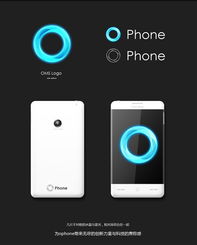
Fotoenvejecimiento: A Comprehensive Guide to Photoaging and Its Prevention
Have you ever wondered why your skin looks different as you age? One of the primary reasons is photoaging, a process that accelerates skin aging due to prolonged exposure to ultraviolet (UV) radiation from the sun. In this article, we will delve into the concept of fotoenvejecimiento, its causes, effects, and most importantly, how to prevent it.
What is Fotoenvejecimiento?

Fotoenvejecimiento, also known as photoaging, is a type of skin aging caused by the cumulative damage to the skin from UV radiation. Unlike intrinsic aging, which is a natural process, photoaging is a result of external factors, primarily the sun’s rays. This type of aging can occur at any age, but it is more common in individuals who have had prolonged sun exposure.
Causes of Fotoenvejecimiento

Several factors contribute to the development of photoaging. The most significant cause is UV radiation from the sun, which can damage the skin’s DNA and lead to the formation of wrinkles, age spots, and other visible signs of aging. Other factors include:
- Environmental pollution
- Smoking
- Repeated exposure to artificial UV sources, such as tanning beds
Effects of Fotoenvejecimiento

The effects of photoaging can be quite noticeable and may include:
- Wrinkles and fine lines
- Age spots or sunspots
- Thinning of the skin
- Loss of elasticity
- Visible blood vessels (telangiectasias)
Preventing Fotoenvejecimiento
Preventing photoaging involves a combination of lifestyle changes, skincare routines, and protective measures. Here are some effective strategies:
- Use sunscreen daily: Apply a broad-spectrum sunscreen with an SPF of at least 30 to all exposed skin, even on cloudy days. Reapply every two hours or after swimming or sweating.
- Seek shade: Limit your exposure to the sun, especially between 10 a.m. and 4 p.m. when UV radiation is strongest.
- Wear protective clothing: Long-sleeved shirts, pants, wide-brimmed hats, and sunglasses can help shield your skin from UV rays.
- Stay hydrated: Drinking plenty of water helps maintain your skin’s elasticity and reduces the appearance of fine lines and wrinkles.
- Quit smoking: Smoking can accelerate the aging process and worsen the effects of photoaging.
Skincare Products for Fotoenvejecimiento
Several skincare products can help combat the effects of photoaging. These include:
- Antioxidants: Products containing antioxidants, such as vitamin C, vitamin E, and green tea, can help protect your skin from UV damage.
- Retinoids: Topical retinoids, such as retinol and tretinoin, can help reduce the appearance of wrinkles and improve skin texture.
- Peptides: Peptides can stimulate collagen production and improve skin elasticity.
- Hyaluronic acid: This ingredient helps keep your skin hydrated and plump, reducing the appearance of fine lines and wrinkles.
Table: Comparison of Common Sunscreen Ingredients
| Ingredient | Protection Type | Effectiveness | Side Effects |
|---|---|---|---|
| Avobenzone | UVA and UVB | High | Can cause irritation in sensitive skin |
| Octocrylene | UVB | High |






